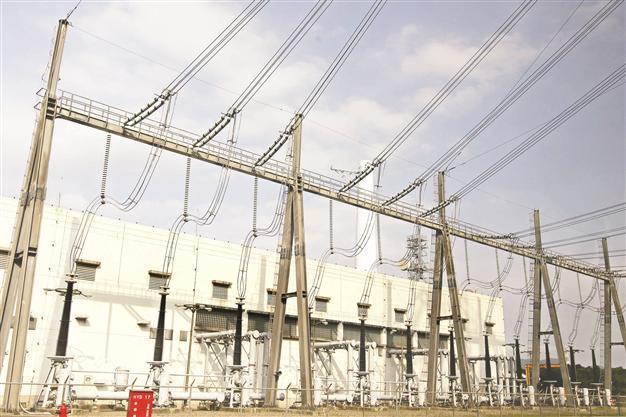Japan avoids legal power usage cuts
TOKYO - Reuters

A facility is seen at an incompleted Taipower nuclear power plant in Gongliao. REUTERS photo
Japan urged at least 15 percent power cuts in its urban-industrial west this summer from 2010 levels to cope with shortages after all nuclear reactors shut down, but stopped short of the mandatory cuts seen in the east last year.The government said May 18 that it aimed to avoid rolling blackouts in the region - home to many manufacturers including struggling electronics giants Panasonic Corp and Sharp Corp - although it needed to prepare just in case.
Power shortages could undermine a recovery in the world’s third-biggest economy and hasten manufacturers’ moves to shift factories overseas to avoid high production costs and an uncertain electricity supply.
Japan’s $5 trillion economy relied for nuclear power for almost 30 percent of electricity needs before the March 2011 Fukushima crisis. But all 50 reactors are now offline for maintenance checks and with the public wary of restarts due to safety concerns, the gap is being met by firing up costly fossil fuel facilities and through energy-saving steps.
Last year’s massive earthquake and tsunami wrecked the Fukushima Daiichi nuclear plant, triggering meltdowns that caused widespread contamination and forced mass evacuations.
Last summer, the government imposed mandatory usage cuts of 15 percent on customers of Fukushima plant operator Tokyo Electric Power and Tohoku Electric in the east of the country. Neither will face numerical targets this summer as they are expected to meet demand by firing up thermal plants.
The reduction targets are compared to usage levels in 2010, when Japan suffered record high summer temperatures. This summer, customers of Kansai Electric Power, based in Osaka, western Japan, will be asked to cut usage by at least 15 percent.
The utility has projected a 14.9 percent shortfall in August if temperatures hit record highs seen in 2010. That would be the worst among the nine utilities that have nuclear plants.
Critics, however, have questioned Kansai Electric’s forecasts, suspecting it is exaggerating potential shortages to strengthen the argument for restarting offline reactors. The government has yet to finalize a revamp of an energy mix program that had called for boosting nuclear power above 50 percent of electricity supply from about 30 percent before the crisis, with options ranging from zero to 35 percent by 2030.
















